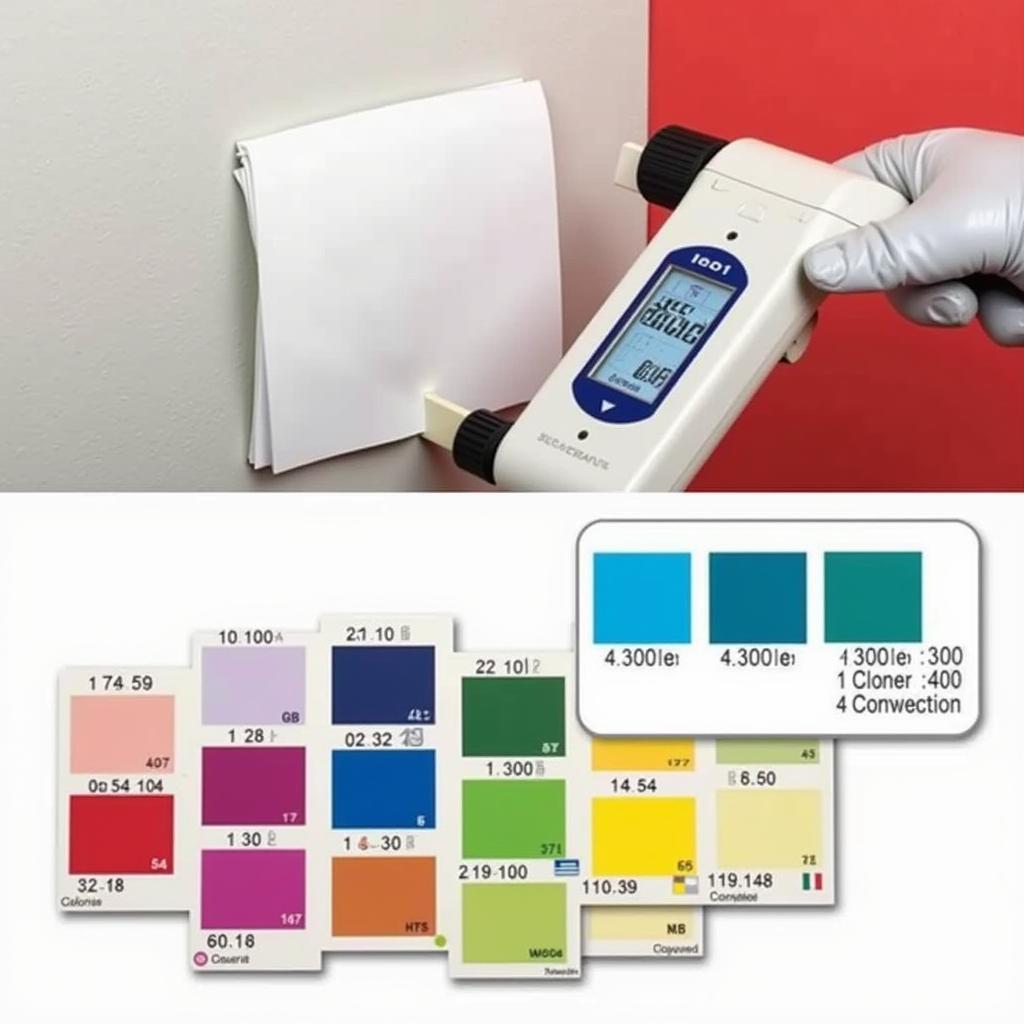Matching an existing paint color can seem daunting, but with the right approach, it can be a surprisingly straightforward process. Whether you’re touching up a scuffed wall, extending a painted area, or simply trying to recreate a beloved shade, understanding the techniques and tools available can make all the difference. This guide will provide you with the expert advice you need to confidently match your existing paint color and achieve a seamless, professional finish. For instance, did you know that even slight variations in lighting can affect how a color appears? We’ll cover that and much more. Want to learn how to mix mustard color? Check out our guide!
Matching paint colors accurately involves a combination of scientific precision and artistic observation. While technology plays a vital role, understanding the underlying principles of color theory can significantly enhance your ability to achieve a perfect match. Factors such as lighting, sheen, and the age of the existing paint can all influence the perceived color. Therefore, a multifaceted approach is crucial for success. Even if you are trying to coordinate colors like siding with a brown roof, understanding color matching basics is essential.
Utilizing Paint Chips for Accurate Color Matching
One of the most common and effective methods for matching existing paint colors is using paint chips. Available at most hardware and paint stores, these small cards offer a tangible representation of various colors. The key is to find the chip that most closely resembles your existing paint. Hold the chip against the painted surface in different lighting conditions to ensure a consistent match.
If you can’t find an exact match, many paint stores offer color matching services. They can analyze a small sample of your existing paint (a chip is ideal) and create a custom mix that precisely replicates the color. This service is particularly useful for older or discontinued paint colors. Knowing how to color match car paint uses a similar principle.
After you’ve found the closest match using paint chips, apply a small test patch to an inconspicuous area of the wall. Allow it to dry completely before evaluating the match in natural and artificial light. This step is crucial as wet paint often appears darker than its dried counterpart.
 Paint Chip Matching Process
Paint Chip Matching Process
Understanding the Role of Light and Sheen
Light plays a crucial role in how we perceive color. Natural light, incandescent bulbs, and fluorescent lights all cast different hues, which can significantly affect the appearance of your paint. When matching colors, observe the existing paint under the same lighting conditions as the area you plan to paint.
Sheen also impacts color perception. A high-gloss finish will reflect more light, making the color appear brighter and more vibrant, while a matte finish will absorb more light, resulting in a more subdued appearance. Ensure the new paint has the same sheen as the existing paint to achieve a seamless blend. This is important even when choosing things like hinges for white doors.
Advanced Techniques for Precise Color Matching
For extremely precise color matching, consider using a spectrophotometer. This device measures the wavelengths of light reflected by a surface, providing a highly accurate color reading. While typically used by professionals, some paint stores offer spectrophotometer services to consumers.
 Spectrophotometer Paint Color Analysis
Spectrophotometer Paint Color Analysis
Another valuable technique is to take multiple small paint samples from different areas of the painted surface. This approach accounts for any variations in color that may have occurred due to fading, weathering, or previous touch-ups.
Thinking about what color your baseboards should be? Our guide can help you choose the perfect complementary color for your walls.
Troubleshooting Common Color Matching Issues
Sometimes, despite your best efforts, the new paint might not perfectly match the existing color. Here are a few troubleshooting tips:
-
Slight variations: If the difference is subtle, you might be able to blend the new paint into the old by feathering the edges.
-
Noticeable differences: If the difference is more pronounced, consider repainting the entire section of the wall to ensure a uniform finish.
-
Metamerism: This phenomenon occurs when two colors appear identical under one light source but different under another. If you suspect metamerism, test the paint under various lighting conditions before committing to a large area.
Conclusion: Mastering the Art of Color Matching
Matching existing paint color is a skill that combines technical knowledge with a keen eye for detail. By understanding the factors that influence color perception and utilizing the tools and techniques described in this guide, you can confidently tackle any color matching project and achieve a flawless, professional result. Remember to always test your paint in small areas and under various lighting conditions before applying it to larger surfaces. Now you know how to match existing paint color like a pro!
FAQs
-
What is the best way to match existing paint color? Using paint chips and a paint store’s color matching service are effective methods.
-
How does lighting affect paint color? Different light sources cast different hues, which can alter the appearance of paint.
-
What is the role of sheen in color matching? Sheen affects how light reflects off the surface, impacting the perceived color. Match the sheen of the new paint to the old for a seamless blend.
-
What if I can’t find an exact match? Paint stores can create a custom color match using a small sample of your existing paint.
-
How do I test a paint match? Apply a small test patch to an inconspicuous area and let it dry completely before evaluating the match in different lighting conditions.
-
What should I do if the new paint doesn’t match perfectly? Feather the edges for slight variations or repaint the entire section for noticeable differences.
-
What is metamerism? It’s when two colors appear the same under one light source but different under another. Test under various lighting for this.
Common Situations
-
Scuffed walls: Matching the existing paint color is crucial for seamless touch-ups.
-
Extending painted areas: Accurate color matching ensures a consistent look across the expanded area.
-
Recreating a discontinued color: A paint store’s color matching service can replicate the shade.
Further Reading
Check out our articles on What Color Hinges for White Doors and How to Color Match Car Paint for more helpful tips.
Need Help?
For assistance with your color matching project, contact us at Phone Number: 0373298888, Email: [email protected] or visit us at 86 Cầu Giấy, Hanoi. We have a 24/7 customer service team ready to assist you.

